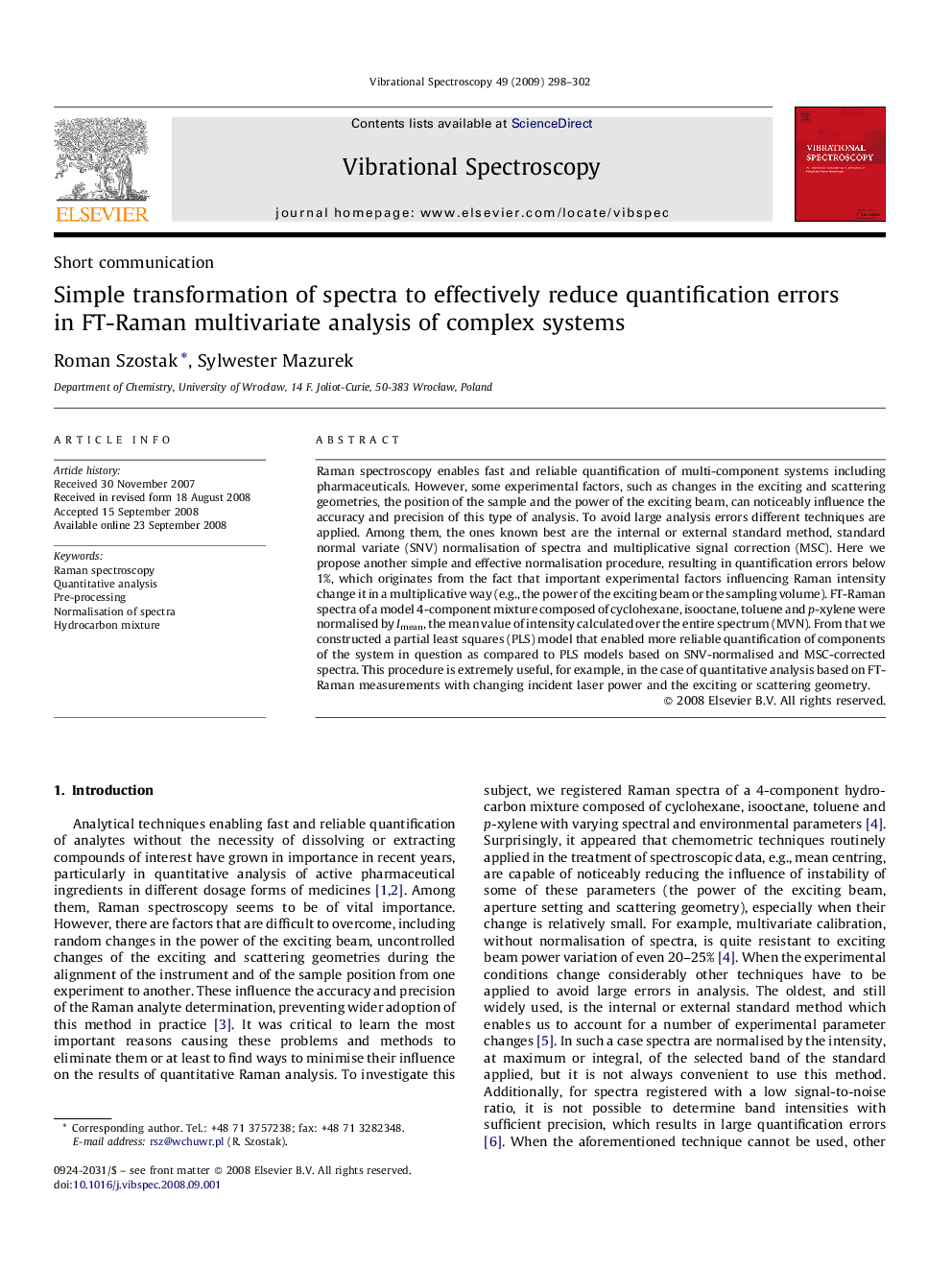| Article ID | Journal | Published Year | Pages | File Type |
|---|---|---|---|---|
| 1250351 | Vibrational Spectroscopy | 2009 | 5 Pages |
Raman spectroscopy enables fast and reliable quantification of multi-component systems including pharmaceuticals. However, some experimental factors, such as changes in the exciting and scattering geometries, the position of the sample and the power of the exciting beam, can noticeably influence the accuracy and precision of this type of analysis. To avoid large analysis errors different techniques are applied. Among them, the ones known best are the internal or external standard method, standard normal variate (SNV) normalisation of spectra and multiplicative signal correction (MSC). Here we propose another simple and effective normalisation procedure, resulting in quantification errors below 1%, which originates from the fact that important experimental factors influencing Raman intensity change it in a multiplicative way (e.g., the power of the exciting beam or the sampling volume). FT-Raman spectra of a model 4-component mixture composed of cyclohexane, isooctane, toluene and p-xylene were normalised by Imean, the mean value of intensity calculated over the entire spectrum (MVN). From that we constructed a partial least squares (PLS) model that enabled more reliable quantification of components of the system in question as compared to PLS models based on SNV-normalised and MSC-corrected spectra. This procedure is extremely useful, for example, in the case of quantitative analysis based on FT-Raman measurements with changing incident laser power and the exciting or scattering geometry.
